Solving Puzzle to Find the Way

Project Overview
Project Type: Personal
Focus: Level Design
Role: Game Designer and Programmer
Game Engine: Unreal 4
Language: Unreal Blueprint
Description:
Air Arena is a 3D top-down puzzle, highlight the reusability of gameplay items.
The player will act as a challenger who is sent to the maze-like air arena to find the way to the
destination. Through the level, the player will encounter puzzles of color, physical reflection and
teleport.
Controls:
WASD / Arrow Keys = Move
E = Interact
Esc = Pause Menu
Features:
▪ Game Design & Programming
▪ Reusable Gameplay Kit
▪ Puzzle with Infinite Combinations
▪ Encounter & Level Design
▪ Progression of Difficulty
▪ Reflection & Teleport Mechanics
▪ UI (Start Menu, Pause Menu, HUD)
Part 01 - Level Design Overview
Simple Story
Air Arena is famous for its challenge, difficulty, and the super glory. Every year, people from
different professions come to here. But it is said that only 1/10 or even less could successfully pass
it. And those few who past, all become the most outstanding air troopers who are both tough in hands
and intelligent in mind to protect the peace of the airland. The challenge has its classic idiom, “A
plane drops you at start, a plane pick you up at the end.”
Short Description for Encounters
Encounter 1: The Jumper
Type: Action-Based
A real test for a tough jumper.
Tips: Pay attention to jumping trajectories in the air, and land on every platform safely.
Encounter 2: Smart Path
Type: Physics-Based, Puzzle-Based
Learn how to breakthrough the new path.
Tips: Make the most use of every props to open next door.
Encounter 3: Teleport
Type: Physics-Based, Puzzle-Based
Rack your head to solve the puzzle.
Tips: Higher-level of Smart Path.
Three Cs
Camera: Top Down View
Control: WSAD = move; Space = Jump; E = Interact
Character: Humanoid
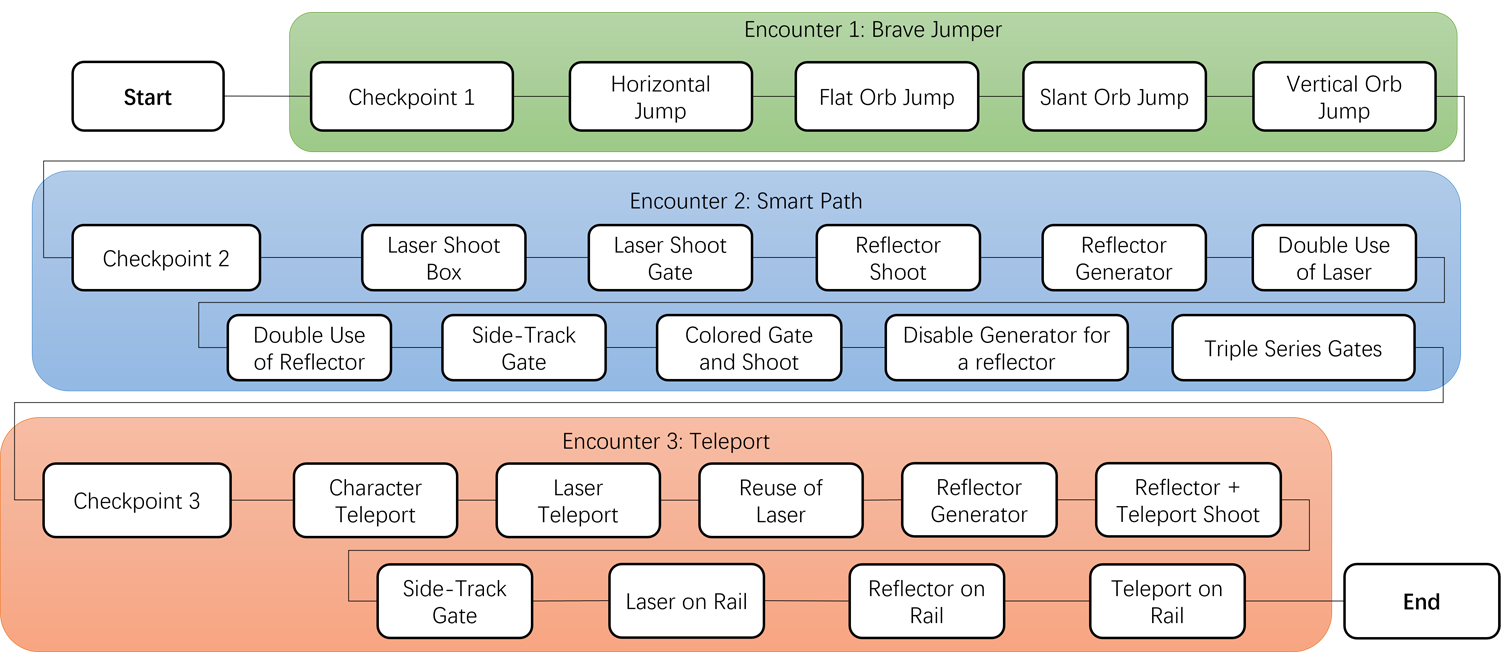
Level Bubble Diagram
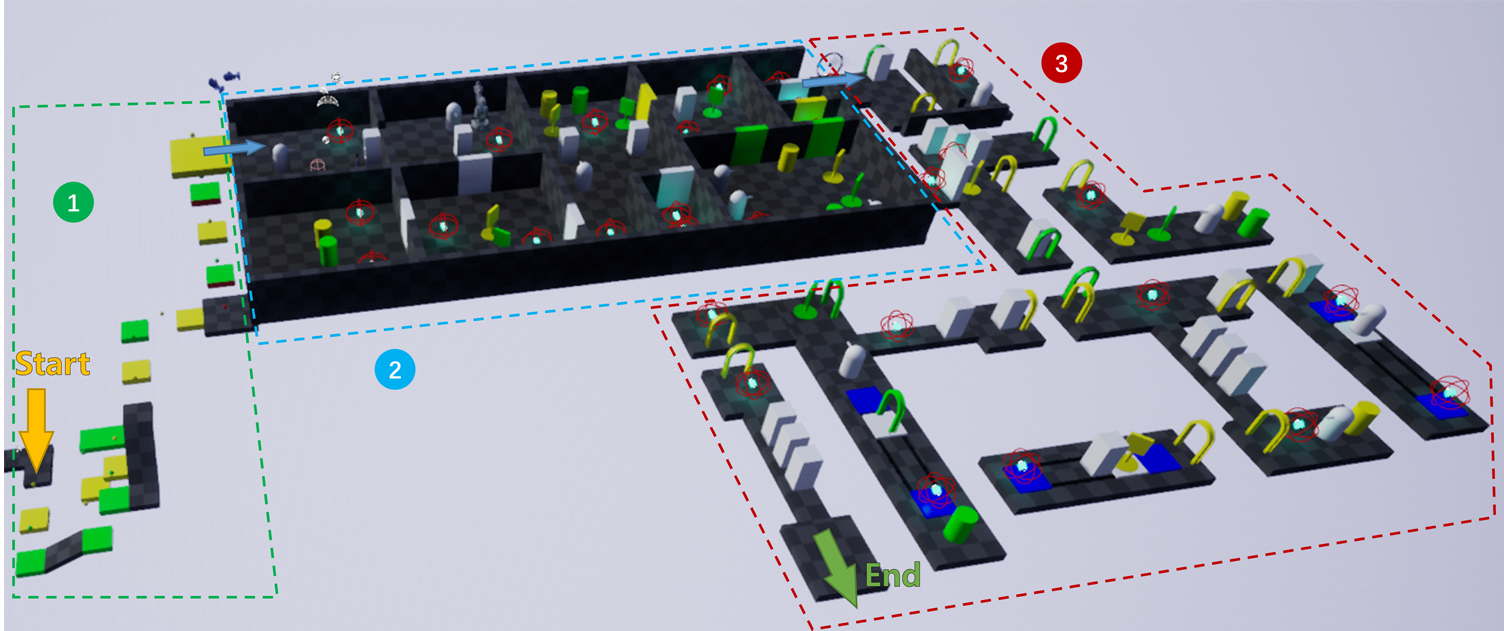
Level Blockout
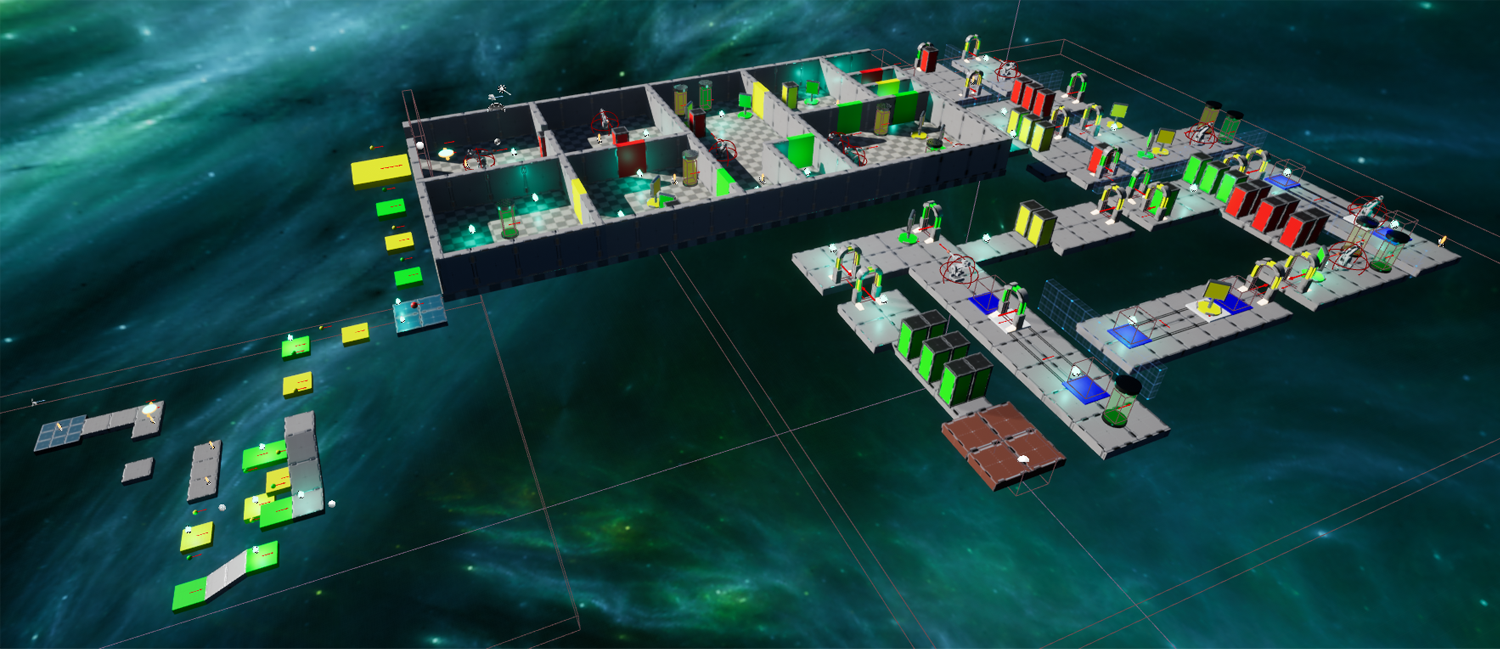
Level Final Effect
Simple Story
Short Description for Encounters
Type: Action-Based
A real test for a tough jumper.
Tips: Pay attention to jumping trajectories in the air, and land on every platform safely.
Encounter 2: Smart Path
Type: Physics-Based, Puzzle-Based
Learn how to breakthrough the new path.
Tips: Make the most use of every props to open next door.
Encounter 3: Teleport
Type: Physics-Based, Puzzle-Based
Rack your head to solve the puzzle.
Tips: Higher-level of Smart Path.
Three Cs
Control: WSAD = move; Space = Jump; E = Interact
Character: Humanoid

Level Bubble Diagram

Level Blockout

Level Final Effect
Part 02 - Encounter 1: The Jumper

Bubble Diagram
Encounter Design
Interaction:
Players need to predict the best jump point, learn the color orbs and steps mechanism, and apply the
skill to vertical, slant, horizontal conditions.
Feedback & Telegraphing:
Orbs will be shining. Some of them will be moving with a certain track.
Color steps will be transparent if not triggered, and opaque if triggered.
Integration:
In the real battle, air crash is very common. Thus, jumping in air with magic orb is a hard-core
ability for every qualified air trooper.
Rewards:
1. Collections
2. Access to the next encounter
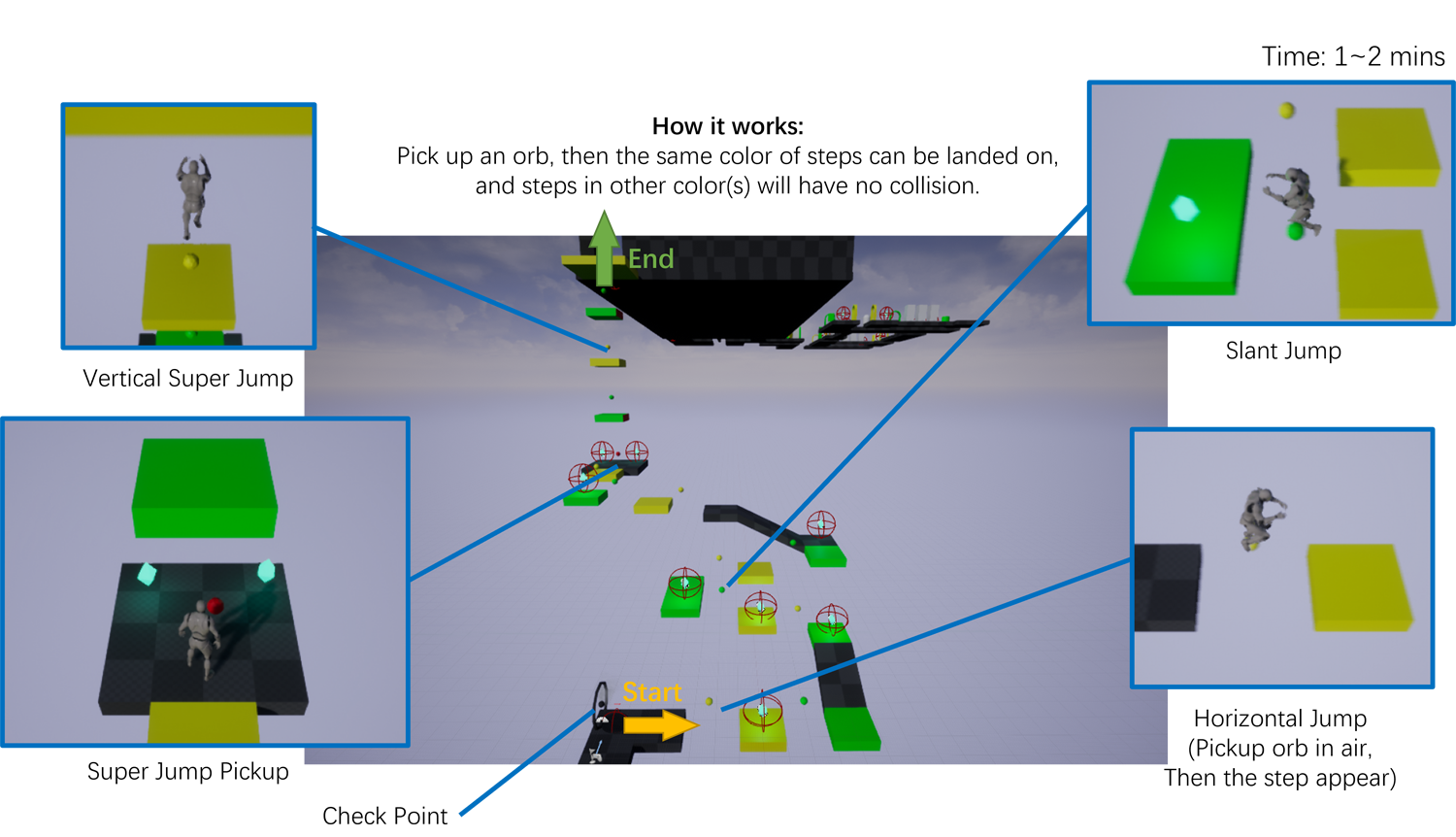
Interactables Overview

Bubble Diagram
Encounter Design
Players need to predict the best jump point, learn the color orbs and steps mechanism, and apply the skill to vertical, slant, horizontal conditions.
Feedback & Telegraphing:
Orbs will be shining. Some of them will be moving with a certain track.
Color steps will be transparent if not triggered, and opaque if triggered.
Integration:
In the real battle, air crash is very common. Thus, jumping in air with magic orb is a hard-core ability for every qualified air trooper.
Rewards:
1. Collections
2. Access to the next encounter

Interactables Overview
Part 03 - Encounter 2: Smart Path

Bubble Diagram
Encounter Design
Interaction:
Players will learn mechanisms of basic laser, mirror, generator, and combine those to break every gate
on their way.
Feedback & Telegraphing:
Laser will have a sound and visible track to let play know what has been shot.
When a box and a gate is destroyed, there will be a breaking sound and a VFX.
Integration:
A real trooper should learn unknown elements quickly. This time, make the use of your brain but not
body to find the way.
Rewards:
1. Collections
2. Access to the next encounter
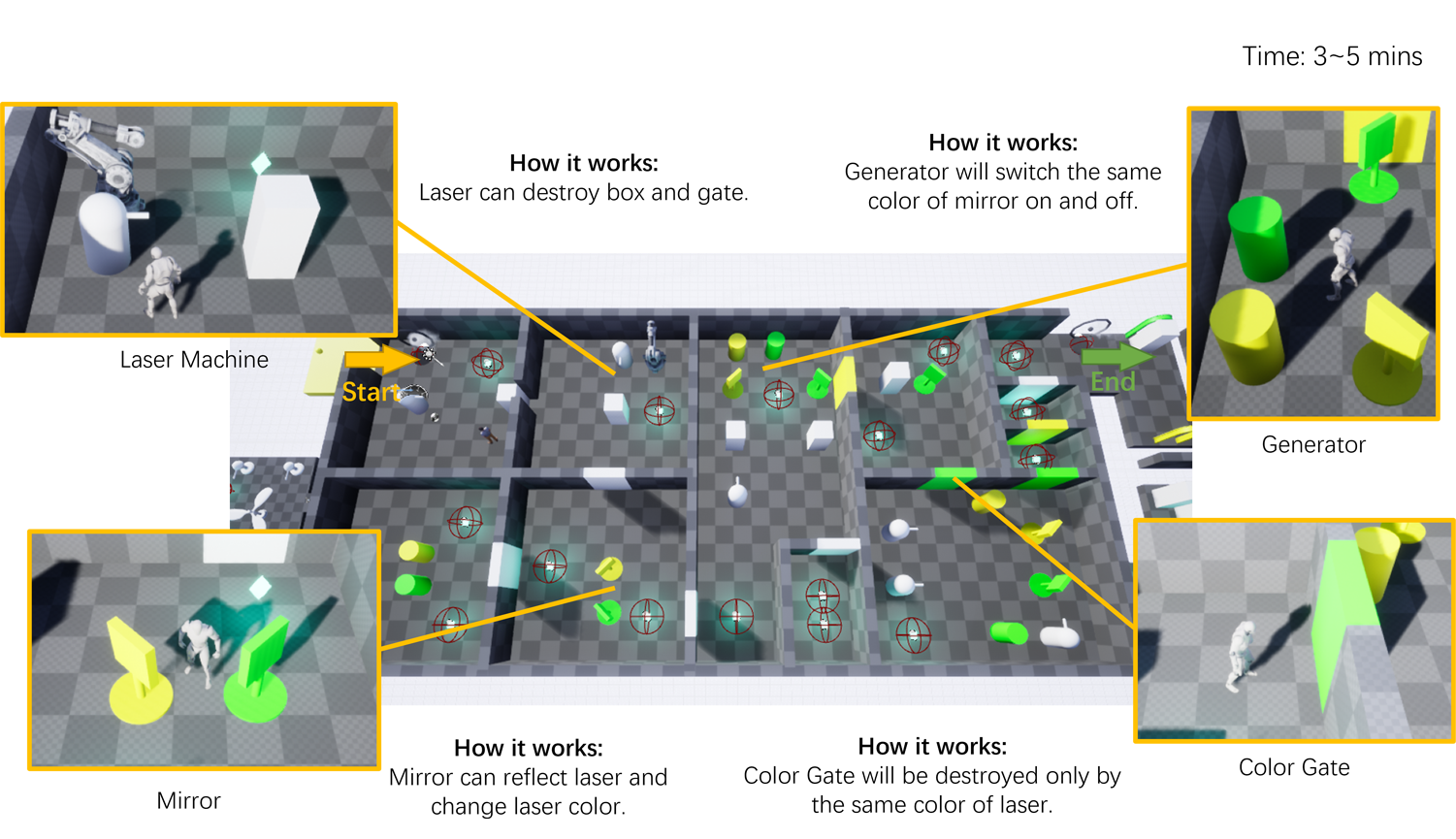
Interactables Overview

Bubble Diagram
Encounter Design
Players will learn mechanisms of basic laser, mirror, generator, and combine those to break every gate on their way.
Feedback & Telegraphing:
Laser will have a sound and visible track to let play know what has been shot.
When a box and a gate is destroyed, there will be a breaking sound and a VFX.
Integration:
A real trooper should learn unknown elements quickly. This time, make the use of your brain but not body to find the way.
Rewards:
1. Collections
2. Access to the next encounter

Interactables Overview
Part 04 - Teleport

Bubble Diagram
Encounter Design
Interaction:
Players need to pass through teleports, trigger laser machines, generate switch for mirrors, move
platform on rails to solve the pathway puzzle.
Feedback & Telegraphing:
Player or laser passing through teleport will have a sound effect.
Rails will have a sound effect when moving.
Integration:
In the case of losing jumping ability and confronting with magic teleport, an air trooper should
learn how to combine new things with old.
Rewards:
1. Collections
2. Access to the end point
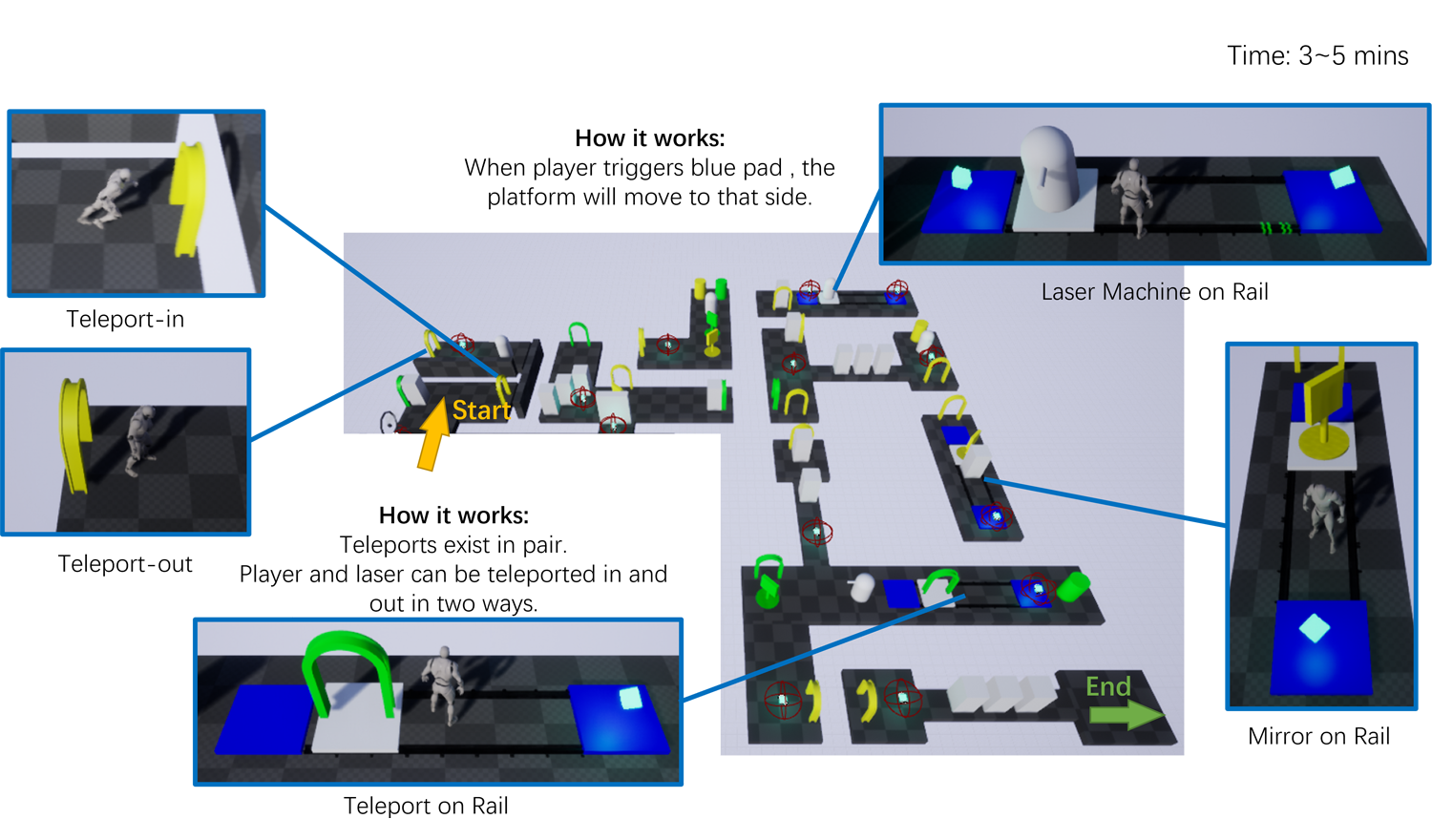
Interactables Overview

Bubble Diagram
Encounter Design
Players need to pass through teleports, trigger laser machines, generate switch for mirrors, move platform on rails to solve the pathway puzzle.
Feedback & Telegraphing:
Player or laser passing through teleport will have a sound effect.
Rails will have a sound effect when moving.
Integration:
In the case of losing jumping ability and confronting with magic teleport, an air trooper should learn how to combine new things with old.
Rewards:
1. Collections
2. Access to the end point

Interactables Overview
Reflection
▪ In this project, I learned the basic workflow of level design. Interactable actors make up a
encounter, and then encounters make up a level.
▪ From the game design perspective, in the sequence of encounters, I considered the order and
rymthm of new objects. The idea is to incorporate turorial in the level. Players will meet new items
one by one. Even though I added the tutorial information actor, my goal is to let players learn
themselves by using them.
▪ Another idea from game design is reusable gameplay kit. Here reusability has meanings for two
layers, reusable for one player experience and for designing new levels. Players can find the new
combination of old items; Level designers can put old items in other new layouts. Both of them will
benefit the game from the perspective of economical design.
▪ This game falls into the tradition, which is 100% linear gameplay sequence. I'm thinking
about some possible extensions for the linear layout. It can have more side-tracks and then merge back
to a point, or totally have another layout like in net shape. An interesting idea comes to me that to
build modular encounters. I guess this will be great to be with auto-generated contents.
▪ When I did this project, I just learned unreal not long. So from the functionality side, I
think it has large space for refactoring.
▪ I invited some friends played the game. There are some common advices. The counting down
timer and crystal collections are kind of unrealated to the main gameplay. And in the third encounter,
the loss of jump ability is a bad design. I learned that the relatedness of the whole game is a key
factor of game design. Also, players prefer to gain than lose abilities. On the other hand, when my
friends play the game, the level design is smooth and friendly.
▪ From the game design perspective, in the sequence of encounters, I considered the order and rymthm of new objects. The idea is to incorporate turorial in the level. Players will meet new items one by one. Even though I added the tutorial information actor, my goal is to let players learn themselves by using them.
▪ Another idea from game design is reusable gameplay kit. Here reusability has meanings for two layers, reusable for one player experience and for designing new levels. Players can find the new combination of old items; Level designers can put old items in other new layouts. Both of them will benefit the game from the perspective of economical design.
▪ This game falls into the tradition, which is 100% linear gameplay sequence. I'm thinking about some possible extensions for the linear layout. It can have more side-tracks and then merge back to a point, or totally have another layout like in net shape. An interesting idea comes to me that to build modular encounters. I guess this will be great to be with auto-generated contents.
▪ When I did this project, I just learned unreal not long. So from the functionality side, I think it has large space for refactoring.
▪ I invited some friends played the game. There are some common advices. The counting down timer and crystal collections are kind of unrealated to the main gameplay. And in the third encounter, the loss of jump ability is a bad design. I learned that the relatedness of the whole game is a key factor of game design. Also, players prefer to gain than lose abilities. On the other hand, when my friends play the game, the level design is smooth and friendly.